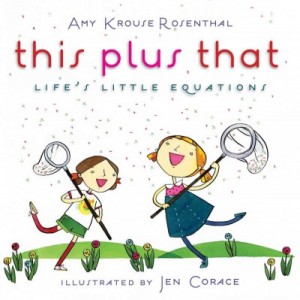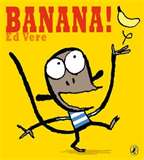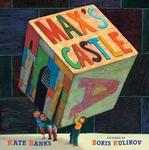Words with Wings
This novel-in-verse is for the daydreamers and for the teachers who want to guide, not squash, those who have such vivid imaginations.
Words with Wings by Nikki Grimes is one of those gorgeously-written books you can read aloud to your class for wonderful group discussions and then watch them eagerly grab it to read independently. (Novels-in-verse are not only a great way to immerse your students in poetry, but it hits both Range of Reading and Fluency for Core Standards. Woohoo!) Imagine yourself reading aloud this page to your students and knowing that for some kids, it will hit home:
First Day
I duck down in the seat
of my new class.
To these kids,
I’m not Gabby yet.
I’m just Shy Girl
Who Lives
Inside Her Head.
No one even knocks
on the door
for a visit.
They don’t know
it’s beautiful
in here.
Gabby is a daydreamer, which sometimes causes problems in school and at home. But how can she help daydreaming, when words have wings? Some of the poems would make for great writing prompts in your classroom, like this one:
Waterfall
Say “waterfall”
and the dreary winter rain
outside my classroom window
turns to liquid thunder,
pounding into a clear pool
miles below,
and I can’t wait
to dive in.
To my absolute delight, Nikki Grimes named the teacher in this book Mr. Spicer after one of the coolest teachers I’ve ever meet, Ed Spicer. He teaches first grade here in Michigan and he is committed to giving his students time to daydream. Sometimes he plays music, sometimes it’s quiet. Sometimes he asks his students to write about their daydreams, or turn and talk about them, or daydream on a particular topic, like a science concept they are studying. I love the power of daydreaming and I adore Ed Spicer for encouraging his students to take a few moments to let their minds wander. Follow him on Facebook for more about his classroom because he is a wealth of amazing ideas.
So share Words with Wings with your students. For a quick Craft & Structure lesson, talk about the words Nikki Grimes chose that have “wings” for Gabby. Why did she choose these words? What words have wings for you? Give your students a few minutes just to daydream, wonder and imagine. It may become a favorite break in your classroom.
Happy September, everyone!
For more information about the author, please visit: nikkigrimes.com.
Read MoreThis Plus That: Life’s Little Equations
 Not only is this week’s picture book a fun way to teach some of the Common Core State Standards in Reading, it is also the best inspiration for your “welcome back to school” classroom bulletin board.
Not only is this week’s picture book a fun way to teach some of the Common Core State Standards in Reading, it is also the best inspiration for your “welcome back to school” classroom bulletin board.
This Plus That: Life’s Little Equations written by Amy Krouse Rosenthal and illustrated by Jen Corace is sheer brilliance. It starts with:
1 + 1 = us
I love it! Not only will your students know how to read math symbols after sharing this book, but they’ll look at math much more creatively.
Smile + wave = hello
Smile + ocean wave = beach
Some are compare and contrast (I love what does and does not equal a sincere apology!), some are stand-alone sentences. Most are addition, but other math ideas come into play as well:
cozy + smell of pancakes – alarm clock = weekend
This would be fun to pair with 1 + 1 = 5 by David La Rochelle and Brenda Sexton if you’d like to hit Integrating Knowledge & Ideas, but all on its own This Plus That teaches Print Concepts and works beautifully to build Fluency.
After you share This Plus That, brainstorm and write equations with your students. In the book:
leaves + hot soup = fall
What things add up to fall for your students? And I’d love to make a welcoming bulletin board with:
1 + 1 = us and Joe + Gabriel + Julia + Matt…. = our class
This Plus That + your students = a whole new way of writing with math symbols!
For more information about the author, please visit whoisamy.com.
For more information about the illustrator, please visit jencorace.com.
Read More
Banana!
 Want a book that every kid in your class can read with expression and enjoyment? Try Ed Vere’s nearly wordless picture book, Banana! I love using wordless and nearly wordless books with young readers. (If you want the myriad of reasons why wordless books are great for building narrative skills, fluency, top-down processing, etc., check out this article by the Center for the Improvement of Early Reading Achievement or this one from Education Week.) The facial expressions on the two monkeys are so engaging, and the text is limited to two words: banana and please with either question marks or exclamation points. As you read, point out how the exclamation mark and question mark change the way we read the words. (Print Concepts mini-lesson? Check!)
Want a book that every kid in your class can read with expression and enjoyment? Try Ed Vere’s nearly wordless picture book, Banana! I love using wordless and nearly wordless books with young readers. (If you want the myriad of reasons why wordless books are great for building narrative skills, fluency, top-down processing, etc., check out this article by the Center for the Improvement of Early Reading Achievement or this one from Education Week.) The facial expressions on the two monkeys are so engaging, and the text is limited to two words: banana and please with either question marks or exclamation points. As you read, point out how the exclamation mark and question mark change the way we read the words. (Print Concepts mini-lesson? Check!)
Banana! is perfect for young readers’ theater. After reading the book to your students, split them into pairs. The kids can make their own monkey masks or hats or puppets. Give students time to practice their lines (nailing that Common Core State Standard of Fluency). Then, kids take turns performing for the class, reading their lines as you hold up the book and turn the pages.
You can make a silly spin-off book called “Apple!” Take photos of two teachers arguing over who gets to eat the apple and lay them out like Ed Vere’s pages. You can make lots of little class books like this if you have a digital camera – let your students be the stars of the book, arguing over and eventually sharing an orange, or a pencil, etc. Your students will go, well, bananas for this book!
Read MoreMax’s Castle
 Let me make it easier for you this holiday season, because I know how it is. You want to buy a book for a child for the holidays, but you think they’d probably like a toy better, but you don’t want to give plastic junk, and yet do kids even like educational toys? Do you give the kid an abacus and watch that smile dissolve, or do you give in and buy a lead-coated choking hazard that promotes violence and unhealthy body images?
Let me make it easier for you this holiday season, because I know how it is. You want to buy a book for a child for the holidays, but you think they’d probably like a toy better, but you don’t want to give plastic junk, and yet do kids even like educational toys? Do you give the kid an abacus and watch that smile dissolve, or do you give in and buy a lead-coated choking hazard that promotes violence and unhealthy body images?
Get Max’s Castle written by Kate Banks and illustrated by Boris Kulikov along with wooden letter blocks, a game of Scrabble, or Bananagrams and everyone’s happy! If you have an iPad, tech it up for free by downloading the free Magnetic Letters app to play along while you read!
Max’s Castle is full of imagination and creative problem-solving, along with letter recognition and spelling. I love the way Banks and Kulikov show that switching a few letters changes words. Max and his brothers use alphabet blocks to build a castle. Kulikov does a fantastic job with letter arrangement: Max is in the MOAT hanging onto a block that is angled with an M and a B when Benjamin says they need a BOAT. The boys use the letter blocks to solve problems, like when the ADDER that is literally “in” the DARK DUNGEON (Banks capitalizes the words the boys have built with blocks) is causing problems, the boys take the L from the BUGLE to make the ADDER a LADDER.
Once you share Max’s Castle with that lucky kid or with your lucky students, give the kids letter blocks or Scrabble tiles or the iPad with the Magnetic Letters app to play with and rearrange! You can let students explore independently, or give challenges, like “Here comes a SNAKE ready to attack – what could you make to solve the problem?” Kids can switch out letters to make a RAKE to shoo away the snake, or TAKE it to the woods, or give it a SNACK to eat instead of eating you, etc. Encourage students to see if they can make the word look a bit like the object it represents, like Kulikov did, or use the blocks or tiles to build a structure like Max and his brothers did. Kids will build upon the Common Core State Standards of Print Concepts, Phonological Awareness, and Phonics and Word Recognition while they build fine motor skills. You’ll be the hero of the holidays!
Read More







